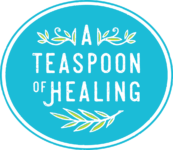Finding Fitness Activities That You Enjoy
Listen to the audio version.
Starting a new fitness routine, although daunting at times, can be exciting and make us want to jump in headfirst to try it out. As human beings, we are naturally drawn to new challenges, and fitness is no exception. Sticking to an exercise routine, however, is not so simple. Boredom can set in very quickly, our schedules and lifestyle can interfere with our plans, we may experience muscle soreness, and become disappointed at the inevitable plateau that happens after several weeks of performing the same activity. All of these things can derail our plans to adhere to an exercise regimen.
You’re more likely to stick to a routine if you enjoy it!
Forcing ourselves to stick to a specific type of exercise that we think we “should” be doing, rather than choosing activities we enjoy, can hamper with our long-term commitment to exercise. For example, I don’t care for barre classes, but I dragged myself to them for a while because I thought I “had” to. This did not work, because I ended up dreading going to barre class and would just head to Starbucks instead! This was definitely not a recipe for contentment and commitment to a routine. Hyper-focus on weight loss and body changes can also contribute to a lack of long-term satisfaction with an exercise routine. These are just a few reasons why it’s important to choose activities you enjoy doing! You’re more likely to stick to a fitness routine if it’s something you enjoy, and if you incorporate a variety of activities to stave off boredom.
As a health coach, I’ve helped a few individuals discover the type of fitness activities they would like to undertake. While I’m not a personal trainer and unable to provide specific exercise advice and information on technique, it’s within my scope of practice to help people start a routine of intentional movement. With open-ended dialogue, people can discover what would work for them based on their schedule, lifestyle, and, most importantly, what they enjoy doing. One of my clients discovered that he enjoyed walking in parks to stay active during the pandemic. He looked forward to his regular walks and they became a part of his life. The key takeaway was that this was an activity that he enjoyed, not dreaded.
Why a hyper-focus on weight loss or physical gains can be detrimental in the long run
A desire for weight loss, physical gains, or fitting into a smaller clothing size is often a goal when people embark on a fitness routine. Don’t get me wrong – this is an excellent motivation to begin and, for a short time at least, sustain an exercise routine. However, it is not always conducive to long-term commitment to physical activity as a lifestyle change. When I first started getting into exercise as a 14-year-old girl, I admit that I was initially motivated by how my body looked and how I wanted it to improve. I remember finding one of my mom’s books, “Thin Thighs in 30 Days,” on our bookshelf. After reading it, I determined that I did not have thin thighs (although looking back, I probably did!), and I began doing the leg exercises described in the book, along with some cardiovascular exercise. I enjoyed it at first. Again weight loss or a quest for toned muscles can be excellent motivators to exercise. However, a hyper-focus on this aspect can be detrimental and even dangerous.
As time went by, I noticed a plateau where I wasn’t seeing as many changes in my body. This made me hyper-fixate even more on my body and wonder why it wasn’t responding as it had been when I first started my routine. Although my diet was nutritious (for a 14-year-old), I began restricting and skipping meals to lose weight. This was unhealthy for me, mentally and physically. My parents noticed, and I ended up finding a healthier balance. At other points in my life, I embarked on ill-fated fitness routines because I felt like I “had to,” rather than focusing on ones I enjoyed. This did not lead to long-term adherence.
Find an activity you enjoy!
It wasn’t until I identified a few activities I enjoyed doing and incorporated them activities into my life, that I was able to stick to a fitness routine. I found that I prefer outdoor exercise (brisk walking, jogging, hiking on trails, swimming, kayaking) over machines, doing strength training at home with dumbbells, yoga, and using my stationary bike for cardio on cold days. I realized that while I don’t enjoy the gym, I don’t mind taking group classes. Knowing these likes and limitations helped me develop a routine I could stick to. I work in walks/jogs and hikes throughout my week, do strength training at home a few days a week, and so on.
Know your strengths and limitations – and what makes you feel alive!
Knowing the limitations of your body is also important. After sustaining a running injury, I realized that my days of running are long gone. I began to look forward to my nearly daily walks as little mini-adventures, exploring new neighborhoods, and taking advantage of the beach that is close by. I learned that I love trying out new trails, and what keeps me going is my curiosity about what is right around the bend.
Also, you might want to have some sort of “distraction” while you work out, to avoid boredom. For example, I discovered that I absolutely need to listen to music when I work out. You might find that you like to listen to podcasts, audio books, take photos or videos, or just have time to think when you move. Knowing all of these things can equip you to create and stick to a routine that works for you. If you work in a place that is near a park, consider taking walk there during your lunch break. There are many ways to work movement into your life. Of course, many communities lack safe places to exercise, so it’s important for cities that care about their residents’ health to lobby for funds for walking trails, paths, and green space.
It’s also important to know yourself. You might want to start strength training, but hate the gym! You can buy weights and find workouts online. Or, if working out at home is boring for you, join a gym! Many people find that gyms provide them with motivation and accountability. Some people might be just fine carrying a couple bags of groceries home, on foot, as a form of strength training. Again, it’s all about what works for YOU – not anyone else.
Focus on the health benefits of exercise – and the rest will follow!
Before I close, I want to re-iterate that it is ok to want to look good, and to use that as motivation to exercise. However, to sustain a regime long-term, try to focus on the other health benefits of exercise, like increased strength, improved sleep, elevated mood, and more energy! These will help you continue when things get boring. You will find that your body will change, and your clothes will fit better, as you continue! (Full disclosure – I have nothing remotely close to a “perfect” body, and I am fine with that! I do notice, however, the difference in my body compared to when I didn’t make intentional, regular movement a part of my daily life.)
What type of exercise do you like to do? Do you have any tips for readers of this blog? Let me know what works for you by leaving a comment.




